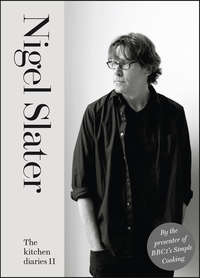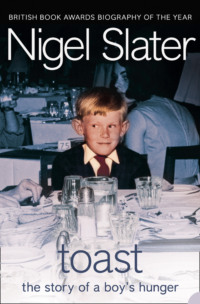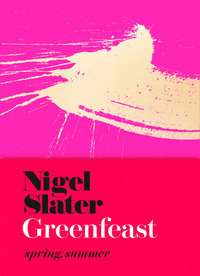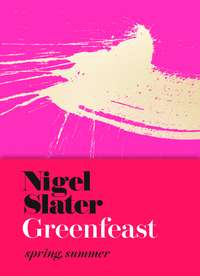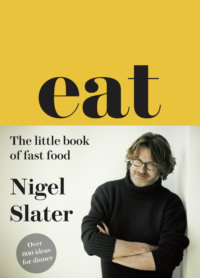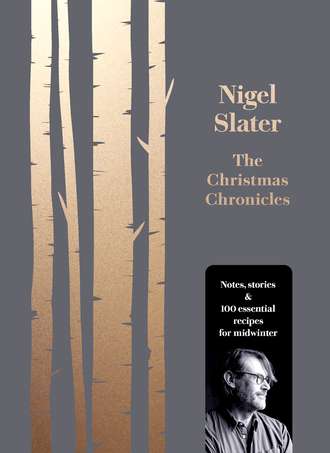
Полная версия
The Christmas Chronicles: Notes, stories & 100 essential recipes for midwinter
Surf and turf
It is a rare day when I don’t make something to eat. If I am going out to dinner then I will make lunch, because I can’t get all the way through to eight in the evening. My fishmonger has pieces of hot-smoked salmon cut from the thick end of the fillet. I bake them with new potatoes and dill.
While the oven is on, I test a quick recipe that I feel might be fun. A sort of toad in the hole for two, with chubby cocktail sausages and a handful of sour red cranberries from the freezer to offer a sharp contrast. A keeper.
Hot-smoked salmon, potatoes and dill
Serves 2
new potatoes – 300g
dill fronds – 2 heaped tablespoons
white wine vinegar – 2 tablespoons
olive oil – 4 tablespoons
hot-smoked salmon – 2 × 200g pieces
Set the oven at 200ºC/Gas 6. Bring a deep pan of water to the boil, and salt it generously. Wash the new potatoes, cut in half lengthways, then cook them in the boiling water for fifteen minutes, until they are tender. Drain them.
Finely chop the dill fronds and put them into a small mixing bowl. Stir in the white wine vinegar, olive oil and a little salt and pepper. Put the potatoes in a roasting tin or baking dish, then add the dill dressing and toss them together. Bake in the preheated oven for fifteen minutes, until they turn pale gold. Place the hot-smoked salmon on top of the potatoes, spoon some of the dressing from the dish over the fish, then return to the oven for ten minutes and serve.
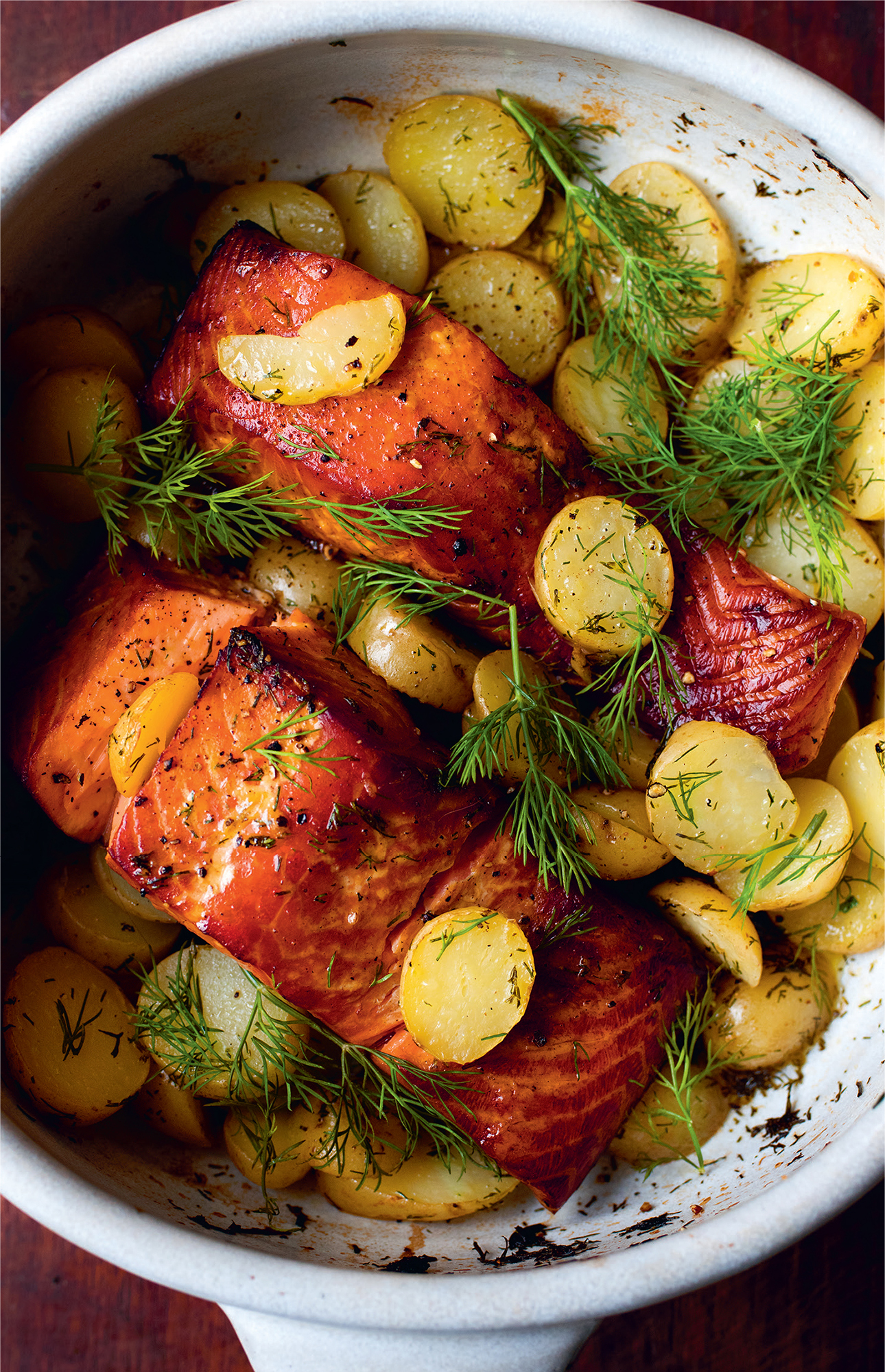
A new toad-in-the-hole
A nod, perhaps, to Thanksgiving. My butcher always uses the same herb-flecked recipe for his cocktail sausages as he does for his breakfast bangers. This isn’t always the case when shopping in supermarkets, and the smaller the sausage the less likely it is to be of interest. If you can’t find a decent one, use larger breakfast sausages cut into short lengths.
Serves 2
eggs – 2
full-fat milk – 300ml
plain flour – 125g
thyme – 5 sprigs
cocktail chipolatas – 350g
a little oil or bacon fat
marmalade – 2 tablespoons
cranberries – 100g
groundnut oil or dripping – 3 tablespoons
Make a batter by beating together the eggs and milk. Beat in a little salt and the flour. Don’t worry about any small lumps. Pull the leaves from the thyme and stir them into the batter, then leave to rest for twenty minutes. Set the oven at 220°C/Gas 7.
Evenly brown the cocktail chipolatas in a little oil or bacon fat. When they are done, add the marmalade and the cranberries to the pan and toss the sausages in it to coat them evenly. Pour the fat, together with the groundnut oil or dripping, into a 22cm round metal dish or similar baking tin, add the marmalade-coated sausages and place in the oven to get hot.
When the oil and sausages are really hot, add the batter and return to the oven immediately. Bake for twenty-five to thirty minutes, until the batter is golden and puffed around the edges. Serve immediately.
19 NOVEMBER
Planting bulbs and a lamb boulangère
I have spent winters deep in the Worcestershire countryside, on the Cornish coast, the Yorkshire moors and in the Black Country. I have trudged through the snow in the Italian Alps, the Norwegian forests and the Icelandic lava fields. I have run from saunas to freezing ice pools in Finland and rolled in the snow after many a steaming hillside onsen in Japan. And yet it is still winter in the city that I find most entrancing.
London in the snow is breathtaking, especially if you can catch it before others wake. Ghostly footprints there will always be – a fox, a postman or a clubber returning home – but if you can rise before six after snow has fallen during the night you will see the city differently. A scene straight from Dickens. Amsterdam, Vienna, Kyoto and Bergen are enchanting blanketed by snow, as if made for deepest winter, but it is London that becomes a different city after a fall of snow.
People say that you only appreciate the cold if you are in the warm. They insist a snowy garden is at its best when viewed from the window of a toasty kitchen. I must disagree. Waking up on an icy morning, I can’t wait to be outside. Showered, cup of coffee in hand, I am out of the kitchen door before a single word is written. My boots crunching on frosty gravel, the piercing air stinging my sinuses, the icy chill brings with it a sudden shot of energy.
As a teenager I had more than enough time to walk in the cold. The school bus couldn’t make it up the hill on snowy mornings, and there was no choice but to walk an hour either way. I revelled in it, even then. Each branch, every snowdrift, each frozen puddle held a secret. Mittens were made to be frozen stiff. Wellingtons were invented to be filled with snow. Serene fields had to be stamped through. Frozen water, a pond, a stream, the water in a bucket all had to be shattered. (I was furious that the ice on the garden pond had to be thawed slowly, using hot kettles from the Aga, so as not to shock my Dad’s precious goldfish.)
Конец ознакомительного фрагмента.
Текст предоставлен ООО «ЛитРес».
Прочитайте эту книгу целиком, купив полную легальную версию на ЛитРес.
Безопасно оплатить книгу можно банковской картой Visa, MasterCard, Maestro, со счета мобильного телефона, с платежного терминала, в салоне МТС или Связной, через PayPal, WebMoney, Яндекс.Деньги, QIWI Кошелек, бонусными картами или другим удобным Вам способом.




